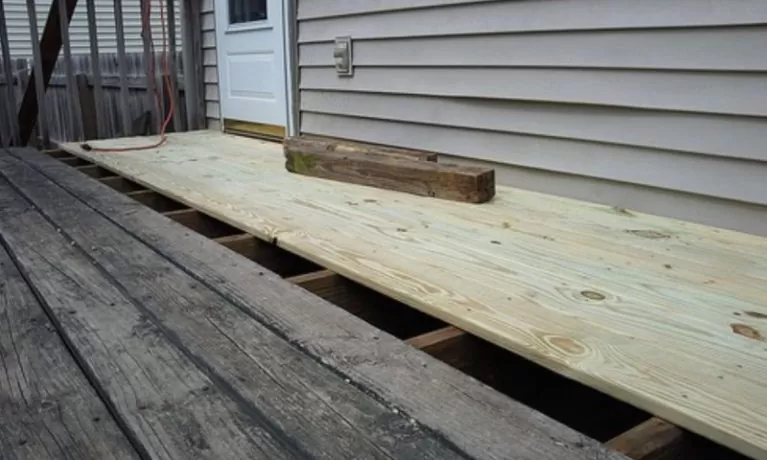Are you sick of looking at your composite deck, warped and cracked from the heat? You’re not alone. Many composite deck owners have the same problem. When you are thinking about how to fix warped composite decking, you might be thinking that you will have to replace the whole thing.
Fear not; there is a way to fix it without having to replace the whole thing! With just a few simple tools and materials, you can have your deck look new in no time. In this article, we will show you how to fix a warped composite deck in under an hour.
So what are you waiting for? Get started today and enjoy your beautiful deck for years to come.
How To Fix A Warped Composite Deck In 7 Easy Ways?
Composite decking is susceptible to warping, but there are a few easy things you can do to fix the problem. Here are 7 easy ways to fix a warped composite deck. With these tips, you’ll be able to enjoy your deck for years to come – warp-free!
1. Inspect and identify the wrapped deck
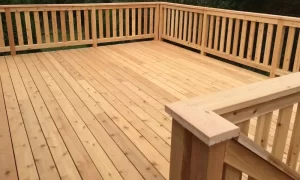
A composite deck can be a beautiful addition to any home, but it’s important to inspect it regularly to make sure that it’s in good condition. Here are some tips on how to identify wrapped composite decking material:
First, take a close look at the surface of the decking. If you see any cracks or splitting, this is a sign that the material is starting to degrade. Also, look for any areas where the boards seem to be warping or sagging. These are all indications that the decking needs to be replaced.
Another thing to look for is mold or mildew growth. This can be a sign of poor drainage or too much moisture in the decking material, so it’s important to address this issue as soon as possible.
Finally, make sure to check the fasteners and support to ensure that they’re all secure and do not show any signs of wear or tear.
2. Support decking material
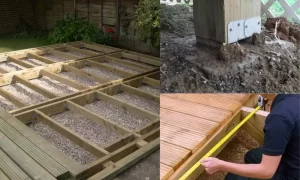
Once you’ve identified the warped or damaged areas, it’s time to take action to fix the problem. The second step is to provide support for the decking material. This can be done by using a few 2x4s or other similar supports placed underneath the decking boards.
If the warping is severe, you may need to use additional support placed closer together to provide more stability. Once the support is in place, check with them regularly to make sure they’re still secure and do not show any signs of wear or tear.
3. Remove the damaged decking boards
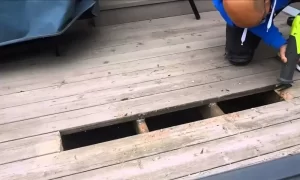
Once the support is in place, it’s time to remove the damaged decking boards. Be sure to wear gloves and use a pry bar or other similar tool to carefully remove the boards. If they’re severely warped, you may need to cut them into smaller pieces before removing them. You should also remove any nails or screws left behind in the decking boards.
4. Cut replacement decking boards
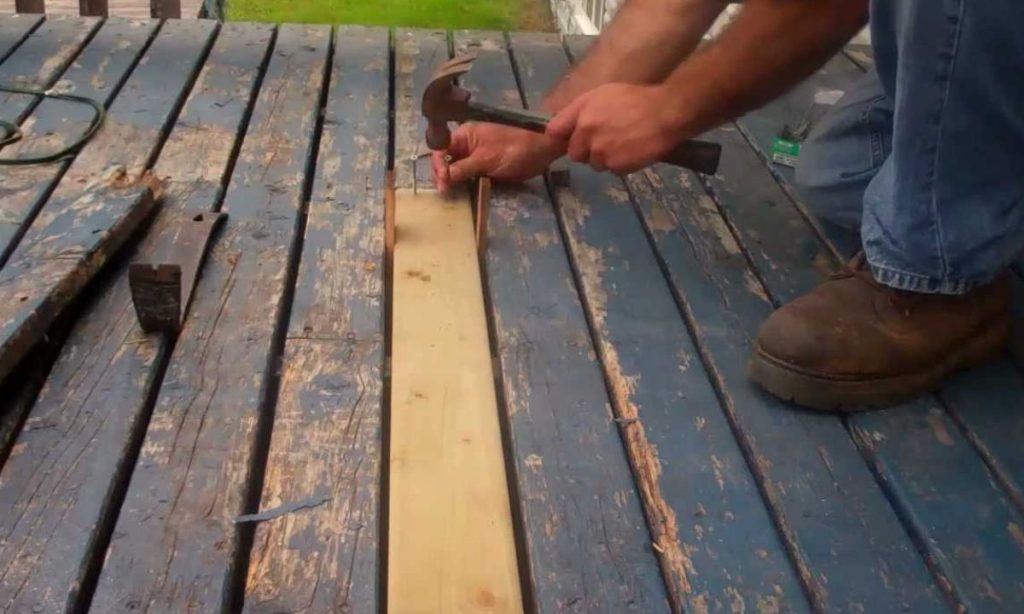
Once the damaged boards have been removed, cut new ones to replace them. Be sure to measure the boards carefully before cutting so that they fit perfectly into the space. It’s also a good idea to leave a little bit of extra material so that you can trim it down as needed.
5. Attaching the new decking boards
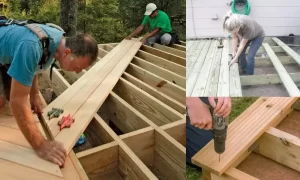
After the new boards have been cut, it’s time to attach them to the deck. Be sure to use screws or nails that are long enough to penetrate through the supports and into the new boards.
Start by attaching the new boards at the end of the deck and working your way toward the center. If you’re using screws, be sure to countersink them so they’re flush with the surface of the boards.
6. Trim any excess material
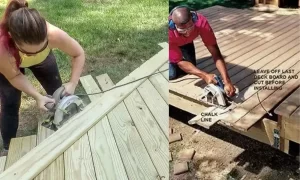
Once the new boards are in place, use a saw to trim any excess material. Be sure to make the cuts as straight as possible so that the finished product looks clean and professional. Otherwise, your deck will look like it was patched together.
7. Apply a finish to the deck
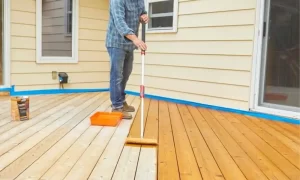
Once the new boards are in place and trimmed, it’s time to apply a finish to the deck. This can be done with a sealer, stain, or paint. When you’re finished, your deck will look good as new!
With these seven easy steps, you’ll have your warped composite deck fixed quickly.
What are the 5 Most Prevalent Reasons for Wrapping a Composite Deck?
While composite decks are designed to be durable and long-lasting, they can still be susceptible to warping if they aren’t properly cared for. There are a number of different factors that can contribute to a warped composite deck, and understanding these causes can help you take steps to prevent warp damage in the future.
Here are the top five causes of warped composite decks:
Poor installation practices
Poor installation practices can contribute to warping. If the boards are not evenly spaced or properly secured, they are more likely to buckle under the weight of furniture or foot traffic. By taking the time to install composite decks correctly, you can prevent them from warping and ensure that they will last for years to come. Make sure you hire a reputable contractor who has experience installing composite decks.
Incorrect joist spacing
If you’re planning on building a composite deck, you might want to think twice about using incorrect joist spacing. While it might not seem like a big deal, incorrect joist spacing is one of the main reasons why composite decks warp.
By spacing the joists too far apart, you’re essentially giving the deck more opportunities to bend and bow. And once the deck starts warping, it’s only a matter of time before it becomes unusable.
If you want to avoid any headaches down the road, make sure you use the correct joist spacing for your composite deck. Your future self will thank you for it.
Exposure to sunlight
Many people enjoy spending time outdoors on their composite decks, but they may not realize that exposure to sunlight can cause the decks to warp. The heat from the sun’s UV rays causes the materials in the composite decking to expand, which leads to warping and, ultimately, damage to the deck.
To avoid this, it is important to choose a composite decking material that is specifically designed to resist warping from sunlight exposure. Additionally, you can take measures to protect your deck from direct sunlight by adding awnings or shade structures.
By taking these steps, you can ensure that your composite deck will remain in good condition for many years.
Extreme humidity changes
When the temperature and humidity levels fluctuate too much, the composite material can start to warp and buckle. This can cause your deck boards to become uneven and create gaps where water and debris can be collected. Not only is this unsightly, but it can also be dangerous if someone were to trip on a warped board. If you have a composite deck, be sure to monitor temperature and humidity levels to help prevent warping.
Poor drainage
Have you ever noticed how some decks warp and sag over time? Poor drainage is often the culprit. When water collects on the deck’s surface, it can cause the composite material to swell and warp. This cannot only be unsightly, but it can also create a trip hazard.
In addition, water-logged decking is more likely to rot and attract pests. If you’re considering a composite deck for your home, be sure to factor in proper drainage. Otherwise, you may end up with a warped, sagging mess that’s dangerous and unattractive.
Frequently Asked Questions
Yes, you can sand your composite deck. However, it’s important to use coarse-grit sandpaper and take care not to damage the surface of the decking. If you’re not careful, sanding can create divots or gouges in the material.
Yes, you can put furniture on your composite deck. However, it’s important to use furniture pads or coasters to protect the surface of the decking. Furniture that is left directly on the decking can cause scratching or damage.
Yes, you can put rugs on your composite deck. But use rugs that are specifically designed for outdoor use. These rugs will be made of materials that can withstand the elements and won’t cause damage to the decking.
You should never clean your composite deck with bleach. Bleach is a harsh chemical that can damage the surface of the decking, making it more susceptible to warping. If you need to clean your composite deck, use a garden hose and some mild soap.
Conclusion
Composite decks are a popular option for homeowners because they offer the beauty of wood with less maintenance. However, sometimes these decks can warp, which can be unsightly and dangerous. In this post, we’ve outlined seven easy ways to fix a warped composite deck in under an hour.
So if your deck is looking a little worse for wear, don’t despair – just follow our simple steps and you’ll have it looking good as new in no time! We hope you find this information helpful and that you visit our blog regularly for more useful tips like this.

